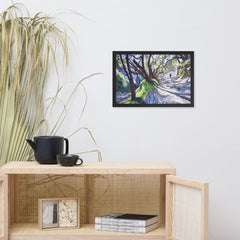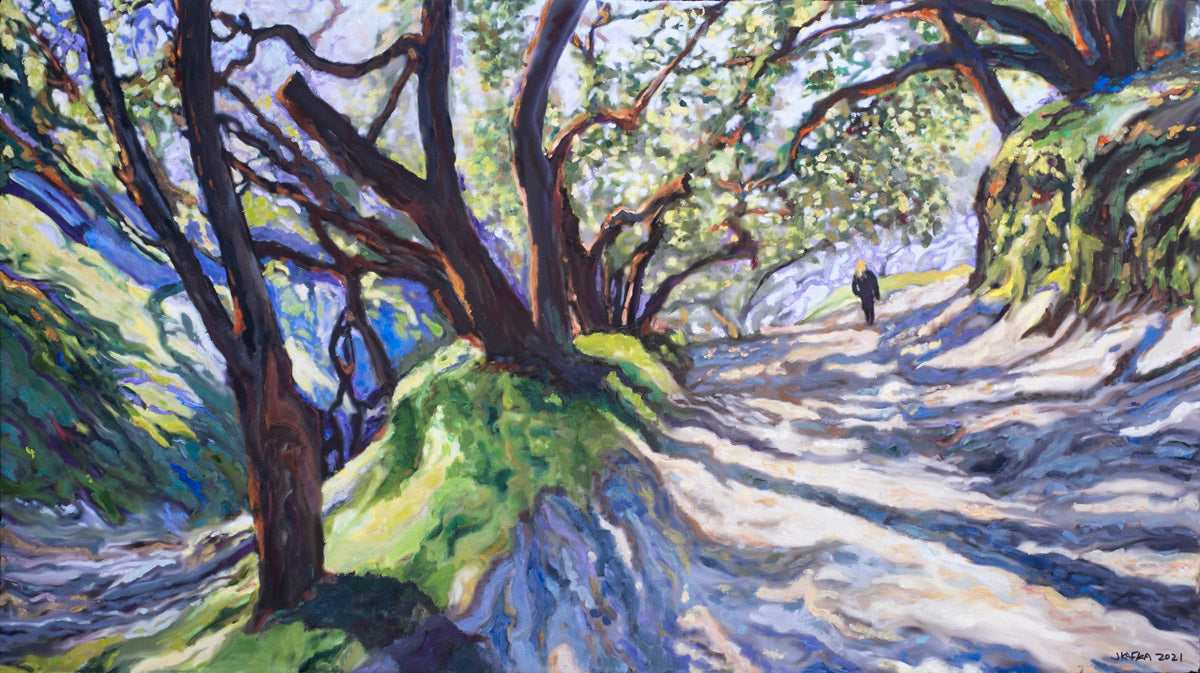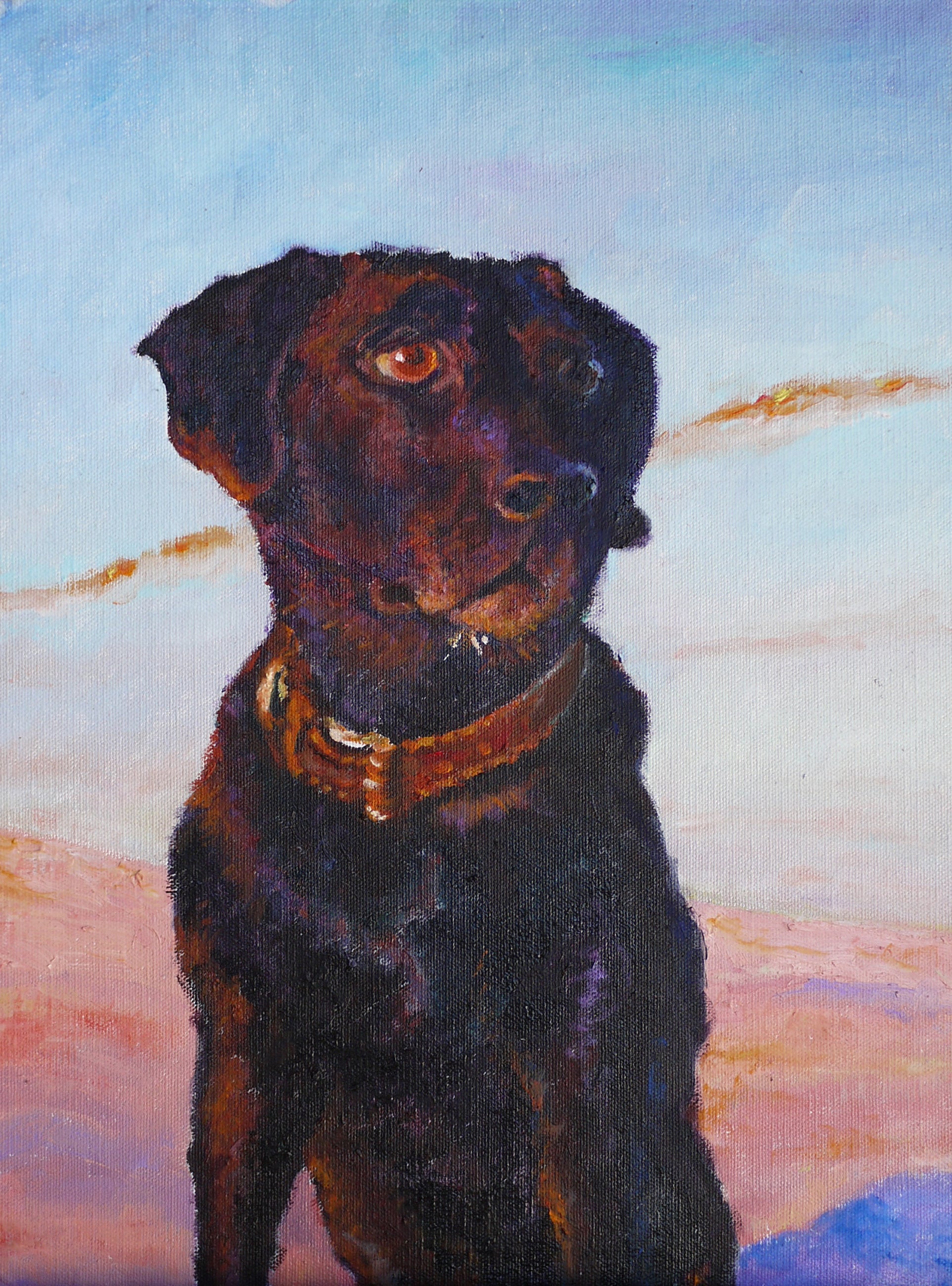Winter landscapes are a captivating subject for artists, offering a unique and ethereal beauty that is distinct from the other seasons. Capturing the essence of a winter scene on canvas requires a thoughtful approach and a set of specific techniques. In this post, we'll delve into the artistry of winter landscape painting, exploring the techniques that bring the frosty beauty to life.
Understanding the Winter Palette
Winter landscapes often feature a muted color palette dominated by whites, grays, and cool blues. Understanding and mastering this subtle palette is crucial for creating a convincing winter scene. Start by familiarizing yourself with the range of whites and grays available in your paint collection. Titanium white, zinc white, and flake white are excellent choices for creating depth and texture in snow. Pay attention to the cool and warm tones within these whites to capture the nuances of snow and ice.
Creating Depth with Shadows
Winter landscapes are characterized by long shadows cast by the low winter sun. To create depth and realism in your painting, focus on the interplay between light and shadow. Shadows on snow are rarely pure black; instead, they tend to reflect the ambient light, taking on subtle tones of blues and purples. Experiment with adding a touch of ultramarine blue or violet to your shadow mixtures to achieve a more natural look.
Mastering Atmospheric Perspective
Winter landscapes often have a hazy and atmospheric quality due to moisture in the air. To convey this effect, employ an atmospheric perspective in your painting. Objects in the distance should appear lighter and less detailed than those in the foreground. Use cooler tones and softer edges for elements in the background to create the illusion of depth and distance. This technique not only adds realism to your winter scene but also enhances the overall mood.
Texture Techniques for Snow and Ice
Achieving realistic snow and ice textures is a hallmark of a successful winter landscape painting. Experiment with various brush techniques to capture the different textures found in snow-covered landscapes. For fresh, powdery snow, use a dry brush technique with quick, short strokes. For icy surfaces, consider palette knife techniques to create a crisp, reflective surface. Mixing gel mediums with your paint can also simulate the glossy, wet look of ice.
Utilizing a Limited Color Palette
Winter scenes lend themselves well to a limited color palette. Embrace the simplicity of winter by focusing on a few key colors. Whites, blues, grays, and earthy tones can be the foundation of your palette. Introduce small hints of warm colors sparingly to draw attention to focal points in your painting. A limited palette not only captures the essence of winter but also challenges you to be more intentional with your color choices.
Capturing the Play of Light on Snow
Winter landscapes are all about the interplay of light on snow-covered surfaces. Pay close attention to the direction of light in your scene and how it interacts with the snow. Highlights on snow can range from brilliant white to subtle blues and purples. Experiment with layering thin glazes of transparent paint to build up the luminosity of the snow. Reflective surfaces, such as frozen lakes or icicles, offer opportunities to showcase the dazzling effects of light on winter elements.
Experimenting with Winter Skies
Winter skies can be a striking element in your landscape painting. From clear, crisp blue skies to overcast and moody cloudscapes, the sky sets the tone for your winter scene. Experiment with different sky compositions and colors to evoke the desired mood. Soft grays, cool blues, and subtle hints of warm tones can create a dynamic and visually engaging winter sky. Don't be afraid to let the sky take center stage in your composition, complementing the snowy landscape below.
Adding Wildlife and Human Elements
Introducing elements of life, such as wildlife or distant figures, can add narrative depth to your winter landscape. Consider incorporating birds in flight, deer in the distance, or distant figures engaged in winter activities. These elements not only add interest to the composition but also provide a sense of scale, emphasizing the vastness of the winter landscape. Use small, deliberate brushstrokes to suggest details without overpowering the tranquility of the scene.
Experimenting with Different Brushstrokes
Winter landscapes offer a wonderful opportunity to experiment with a variety of brushstrokes to convey different textures and effects. Soft, sweeping strokes can mimic the smoothness of untouched snow, while short, choppy strokes can suggest the texture of a frozen, windswept surface. Varying your brushstrokes adds visual interest and complexity to your painting, allowing you to capture the subtleties of the winter environment.
Studying the Masters and Finding Your Style
As with any form of art, studying the works of master painters can provide valuable insights and inspiration. Analyze how renowned artists have approached winter landscapes, paying attention to their use of color, composition, and brushwork. However, don't be afraid to develop your unique style. Experimenting with techniques learned from masters while infusing your personal expression will help you create winter landscapes that are distinctly yours.
Conclusion
Winter landscape painting is a rewarding and captivating endeavor that allows artists to explore the beauty of a season often overlooked. By mastering the techniques discussed above—understanding the winter palette, creating depth with shadows, employing atmospheric perspective, and experimenting with texture and brushstrokes—you can breathe life into your winter scenes. Embrace the tranquility, the crisp air, and the play of light on snow as you embark on your journey to capture the enchanting world of winter on canvas.




